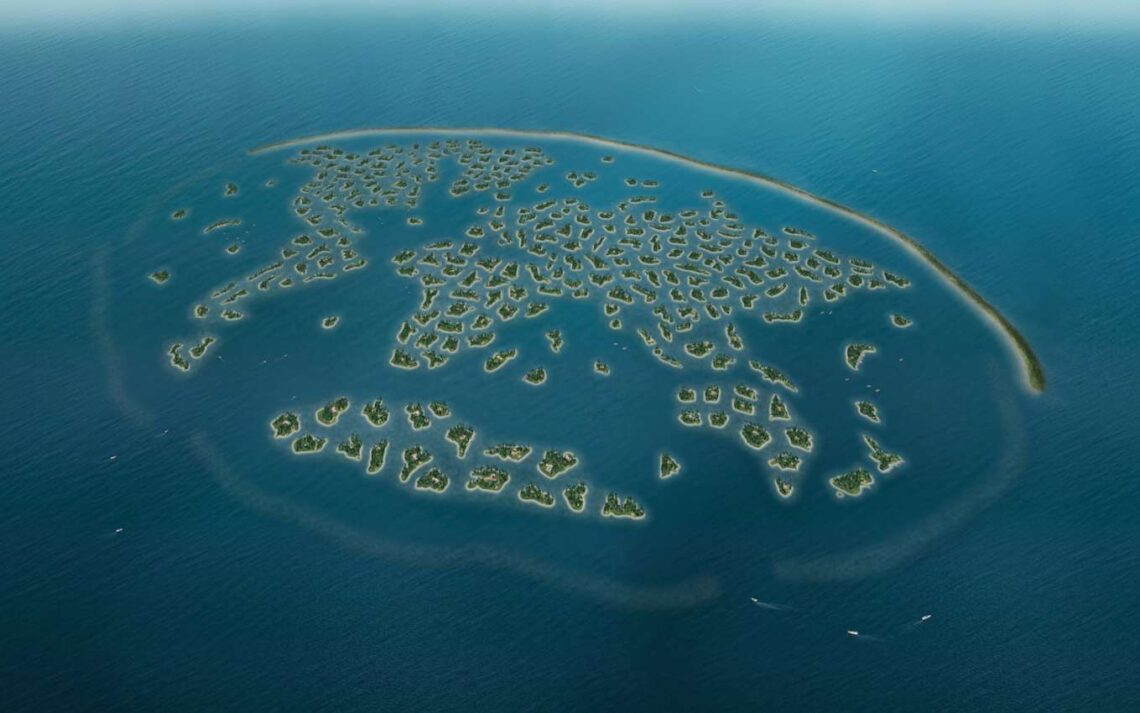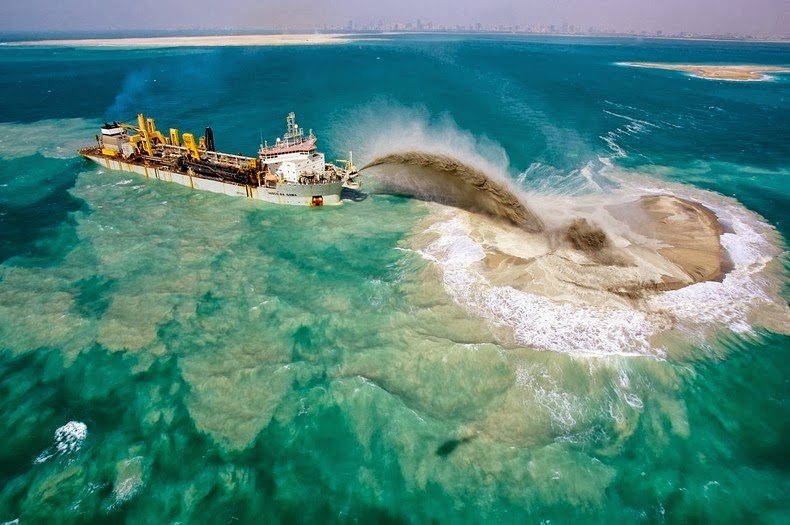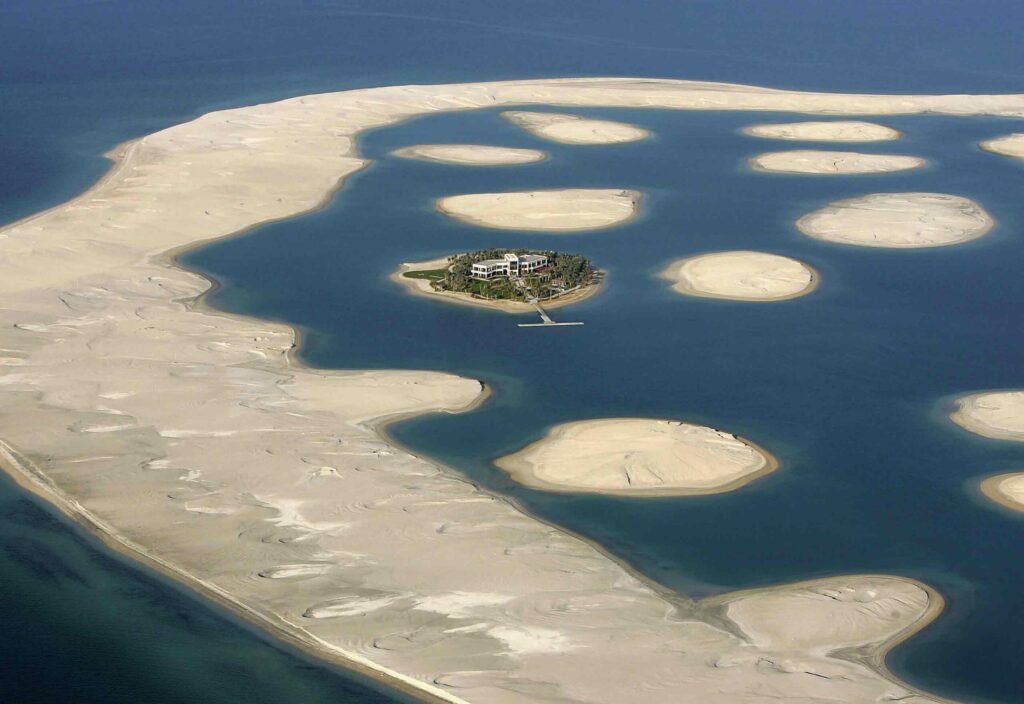
Dubai’s Developing Man-made Islands: The World (Archipelago) – It’s Struggles, Downfall, and Future

Dubai, one of the world’s most prosperous cities, gained its fame, attractions and prosperity in less than a century. Just fifty years ago, Dubai was merely a small town in the midst of the Arabian Desert, but today it serves as the luxurious face of the Middle East. Being the most populous city in the United Arab Emirates (UAE), Dubai is the capital of the Emirate of Dubai, the most populated of the 7 emirates of the United Arab Emirates. However, just lurking off its manicured shores is a reminder of the financial struggles that once troubled the country: The World Islands.
It is the world’s largest archipelago of small artificial islands located in the waters of the Persian Gulf, off of the coast of Dubai. In this article, we will explore their building process, as well as the financial crisis that halted their development, and how this project is to take root once again…
What is The World Archipelago?
The World Islands is an artificial archipelago of nearly 300 small islands, all constructed to form the rough shape of the world map. With one island for nearly every country in the world, The World Islands combined would cover over 20 square miles, and is the largest archipelago of its kind. Being located in the waters of the Persian Gulf, it is around 4 kilometres off the coast of Dubai, United Arab Emirates.
Its Developers & History

Nakheel Properties is the developer behind The World’s development, who is working hand-in-hand with the actual ruler of Dubai, Sheikh Mohammed bin Rashid Al Maktoum, who originally conceived this project. However, the actual construction of the islands was done by two Dutch (joint venture) specialist companies, Van Oord and Boskalis. They were already renowned for being the same companies that created the Palm Jumeirah.
The project was first unveiled in May 2003 by Sheikh Mohammed and the dredging and actual creation of the Islands began just four months later in September of the same year. On the 10th of January 2008 the final stone on the breakwater was laid, completing the development of this archipelago.
Sadly though much of the world has yet to be completed, but that has not stopped people buying up countries at a whim. By January 2008, over 60% of the islands were already sold, 20 of which were bought in the first four months of 2007. As of July 2012, a second island, the Lebanon Island was developed and was “the only island that has so far been developed commercially, and is used for private corporate events and public parties.”
Development

Construction of the 300 islands began in 2003, before a light stop during the 2008 financial crisis. Since then things have moved at a much slower pace. The islands were to be composed of nearly 321 million cubic metres of sand dredged from Dubai’s shallow, coastal waters, as well as 31 million metric tons of rock all of which would be surrounded by an oval shaped breakwater island.
The development of these islands took place via a process of sand reclamation, where the sand dredged from Dubai’s coast was sprayed and vibro-compacted into shape using GPS technology for precision. Following which the sand was surrounded by millions of tons of rocks for protection.
The Financial Crisis
Despite the project being started more than two decades ago, it is yet to be finished due to numerous problems regarding construction and financial issues. All of these have led to delays in the works, nonpayment, debts, legal problems, an irreparable environmental impact, and even some islands sinking back into the sea… Despite all these unforeseen circumstances that have threatened the feasibility of the project, the developer, Nakheel, is not giving up on it.
First problem: oil and financial crisis

The 2008 financial and real estate crisis was the first event to have a negative impact on the feasibility of this macro-project. Shortly after, it was followed by the drop in oil prices in 2014 which fuelled the Emirate’s economy. Due to these unforeseen circumstances, private investors pulled out million dollar debts incurred by the developer, lawsuits and suspended works, with no restart date.
In 2018, sales of new real estate developments dropped by 46% during the first quarter of the year. Since the end of 2014, house prices have dropped by 15%.
Nonetheless, numerous real estate projects have proposed relaunching The World project, with new investors such as the Philippine startup Revolution Precrafted, which will invest 3.2 billion dollars in the construction of luxury apartments and a hotel.
The World: at risk of sinking
The marine company Penguin Marine gave terrible news to The World, warning that this group of archipelagos was sinking back into the sea. They conducted a trial against Nakheel, the project developer regarding these allegations. The company, responsible for providing logistics and transport services to the islands, regularly took measurements for safety purposes.
The main reason for the sinking, is that the sand extracted from the seabed to build the 300 archipelagos was gradually returning to its place of origin. A photograph taken from the International Space Station in February 2010, showed evidence that, indeed, the waters of the Persian Gulf were rising and the islands were starting to disappear. According to information from NASA, Palm Jumeirah was also sinking at a rate of five millimetres per year.
This also led to the channels between the islands becoming obstructed. In the end, Nakheel denied all these allegations and ended up winning the trial against Penguin Marine, which wanted to cancel its contract.
Rising sea levels

In 2017, the Abu Dhabi Environment Agency warned that in the worst-case scenario regarding the effects of climate change, sea levels would increase by 9 metres, which would be catastrophic for Dubai and its artificial islands. This is because approximately 85% of residents in the United Arab Emirates live in coastal areas.
To protect them from the waves, the islands are surrounded by a giant wave breaker. It is only 2 metres above sea level to ensure that residents and visitors have uninterrupted views. The immediate result is the artificial alteration of the marine flows and the reduction of marine currents. In the long term, this barrier is unlikely to be sufficient in the event of the worst forecasts.
The alteration of marine currents and loss of local biodiversity
may increase this problem. The exacerbated rate of construction that took place during the first decade of the 21st century and the pollution associated with this activity did not help to mitigate the warming of the city or of the Persian Gulf.
The Future

Although the status of The World Islands still remains uncertain, further development has sprang back into action. In December of 2021, the artificial archipelago got its first hotel: a five-star resort operated by Anantara that sits on the island representing Argentina. It offers over 70 beachfront villas with panoramic views of Dubai’s skyscraper-strewn skyline. Nonetheless, with the tourism industry suffering from the low economic activity during 2020, developers are still currently taking time to consider their investments in The World Islands. With the massive scale of the project, the uncertain economic conditions, environmental concerns, and logistical concerns, it wouldn’t be wrong to say The World Islands still face an uncertain future, even after seventeen years of construction. It will be however interesting to see what the future holds for The World Islands – so what do you think?
Bibliography
- “The World Islands.” Architectuul, https://architectuul.com/architecture/the-world-islands
- Kehrr, Simeon. “Dubai’s Resurrected ‘World’ Archipelago Gets Its First Hotel.” Financial Times, 3 June 2022, www.ft.com/content/85b2df01-d652-4bc8-9005-25fc2a57a093.
- Burbano, Lucía. “What Happened to Dubai Man-Made Islands?” Tomorrow.city, 18 Oct. 2022,
- https://tomorrow.city/a/dubai-man-made-islands#:~:text=Despite%20the%20project%20being%20started,completed%20between%202023%20and%202028.
- Ayling, Kim. “The Story behind the World Islands, Dubai.” Elite Traveler, 26 May 2021, https://elitetraveler.com/property/story-behind-world-islands-dubai.
- “The World Islands Dubai – Brilliant, or Crazy? – Let’s Buy an Island.” Let’s Buy an Island, https://www.letsbuyanisland.com/the-world-islands-dubai-brilliant-or-crazy/.
- Trailblazers HQ. “The World Islands Dubai | $14 BILLION Bet on Man-Made Islands.” YouTube, 8 Feb. 2021, www.youtube.com/watch?v=tloN5cFSHu8.


5 Comments
zoritoler imol
After I initially commented I clicked the -Notify me when new comments are added- checkbox and now each time a comment is added I get 4 emails with the identical comment. Is there any method you may remove me from that service? Thanks!
Beau Tallon
I like the efforts you have put in this, thanks for all the great articles.
film porno
Its like you read my mind! You appear to know a lot about this, like you wrote the book in it or something. I think that you can do with some pics to drive the message home a little bit, but instead of that, this is fantastic blog. A fantastic read. I’ll definitely be back.
link bokep
I think other web-site proprietors should take this site as an model, very clean and excellent user genial style and design, let alone the content. You’re an expert in this topic!
glucoswitch review
This really answered my drawback, thanks!